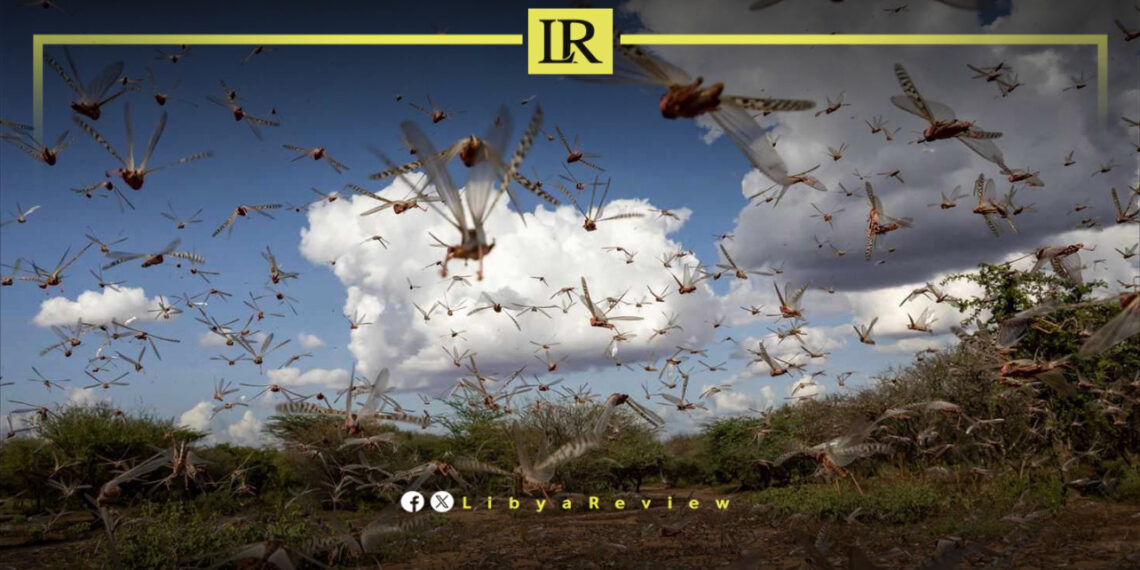Libya has successfully eliminated nearly 80% of the desert locust swarms that have devastated parts of the country, according to Salah Mubarak, head of Libya’s Desert Locust Control Committee.
Despite this significant progress, Mubarak warned that the infestation has already caused extensive agricultural damage, particularly in southern and southwestern regions, where more than 1,250 hectares of farmland have been affected.
The locusts have inflicted severe damage on approximately two million date palms in Tazirbu, a vital agricultural area for Libya’s date production. Mubarak cautioned that additional locust swarms could still emerge, posing a continued threat to Libya’s agriculture sector.
Desert locusts are one of the most destructive migratory pests, capable of traveling hundreds of miles and consuming vast quantities of crops and vegetation in their path.
In North Africa, these swarms are an annual challenge, threatening food security and economic stability. For Libya, where agriculture is crucial to the local economy and food supply, locust invasions are particularly damaging.
The situation is further complicated by Libya’s political instability, which has impacted resources for combating agricultural threats. Desert locust invasions not only affect staple crops but also the date palm industry, which is economically significant for Libyan farmers and communities. Protecting this sector is essential to maintaining local livelihoods and food supplies.
The Desert Locust Control Committee has deployed tracking, spraying, and prevention measures to mitigate the damage.
The team works closely with local authorities to contain the infestation and protect farmlands from further destruction. However, while 80% of the current locust population has been controlled, favorable breeding conditions and weather patterns could lead to new waves of locusts, posing an ongoing threat.


